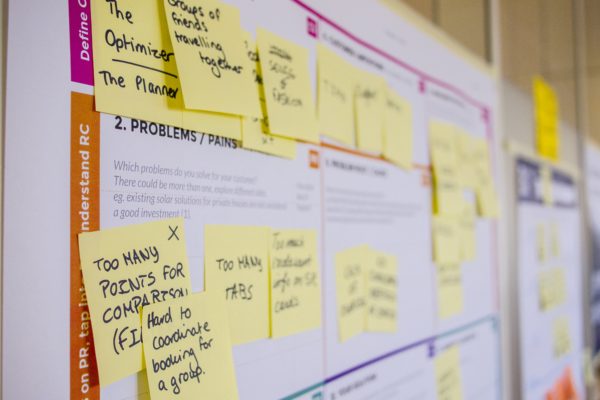
Designing a product is one of the earliest processes of product development. It entails coming up with a product that solves a previously identified problem, appealing to the eye, and easy to use.
UX(User Experience) design focuses on presenting a meaningful experience to a user of the product. Designing User experiences can be tricky, especially when the process conflicts with its User Interface goals.
The majority of product design and development teams today tend to focus on the physical appeal vs how the product engages its users.
Ideally, if a user asks, “So what does the product do?” after trying it out, the User Experience has failed.
Product marketing involves telling a story with a keen eye on the problem, the solution, and how the two intersect. Marketing a product through the User Interface and User experience design processes is a step closer to a successful product launch.
Let’s see how we can use the UX design process for product marketing.
The User Experience Design Process

Before product marketing, a product should exist. In case the product does not exist, a highly effective prototype steps in as a marketing tool. Documentation is critical here, seeing as it will form the basis of the product marketing narrative.
Here are a few steps in designing the product.
Establishing The Goal For The Product
The first step towards product development involves understanding the problem a team is intending to solve. A process that may require the design team to place themselves into an individual’s experiences to understand the problem.
The product marketing team could also borrow from this experience, they can do so to empathise with users, making it easier to pitch the product.
Once the problem has been identified and understood, the team can then move on to the next task. As for the marketing process document the problem and how the team came by such a thing.
Requirements Definition
The identified problem forms the basis of a requirement definition process. Upon understanding what the issue is, document the problem statement. The documentation should focus on creating an understanding of the approach to solve the identified problem.
After questioning the problem statement’s technicalities, the team will develop several ideas on the expected solutions to the problem statement.
Good product and market research will play a key role here since reasonable requirements gathering results from careful and extensive research. Adding on to the marketing narrative, describe the team’s efforts and challenges, including those of the animators, in ensuring a satisfactory product reaches the market.
For example, if you design a pipe, try and understand what fluids will flow through and the pressure-flow rate.
Come up with as many questions as possible, for the next design process. Also, ensure these questions are documented for the marketing narrative.
Analysing Users

Create UX personas representing different users’ needs, likes, dislikes, understanding, and habits. These personas will act as reference points for the designers as they incorporate various technicalities to the product.
Try to understand why users do what they do and what they will require from the product. Question the user’s feelings and thoughts to understand more.
In this step, a software designer may decide to create admin, guest, and registered user personas to analyse what the software needs.
The best way to market this step of story design is by formulating questions and issuing them to users to gain information that will act as product references. Also, you can add the personas to the narrative, allowing for users to relate with whichever fits their description.
Idea Generation

Create a flow of operations for the product. Try and generate a flow chart of how this product works and what will happen when moving certain parts.
In manufacturing, for example, a product development team for a subsea valve manufacturer ought to develop a flow chart describing;
- How would users install the valves?
- How users will perform maintenance
- For how long will the valve last till it requires replacement
- How hard it will be to remove the valve.
You could decide to provide the public with some design specifications to describe what they do not need. But in this information age, if the product is subjective to confidentiality, make sure you issue non-disclosure agreements.
Engaging the public is a form of premarketing for your products.
Design
Start with developing functional models to figure out how various parts of the product will work together. Make tweaks until all functional models are compatible with each other. After which, you may develop product prototypes that resemble the final product.
Involve stakeholders and some users in testing these prototypes while carefully fixing the issues brought up by each product tester. Exercise some patience as some ideas offered by these individuals may take time to implement.
Build on the product marketing narrative by featuring some of the problems encountered during prototype testing.
Present Designs for Development
After ensuring the designs are satisfactory to the design team, hand them over to the development team. The development team will then use the design specifications to develop a final product. Document the technologies used, the challenges met, and the successes.
Final Product Testing
Involve the design team, stakeholders, and product users in testing the final product. Full involvement will ensure you meet all product requirements. Ensure necessary tweaks are made to the product, all this while documenting all testers’ experiences compared to the incidents recorded during product UX design.
Compile the Marketing Narrative
After careful documentation of each step stated above, pick the documented experiences by each individual involved in testing the products, and compile these together.
Create a writeup or a film of all these processes, making it as natural as possible.
Describe how these experiences helped shape the design process and ask other users to share their experiences while using the product. If the need arises, send free samples to UX product reviewers on YouTube, asking them to be as truthful as possible in their reviews.
Conclusion
One cannot duplicate the UX design process for more than one product. The reason for this is that products differ in their nature and have different target audiences altogether. Product marketing through UX design engages the user by allowing them to understand that their opinion matters. A strategy that will not only improve the product but also ensure you retain loyal customers.
Be creative, be open-minded, and focus on the little things.
